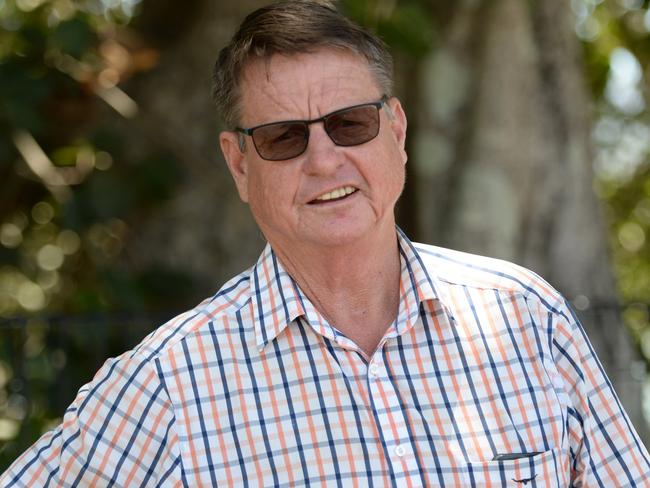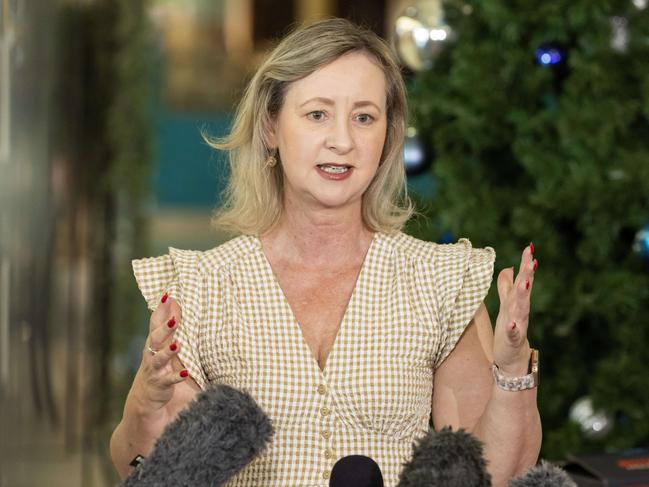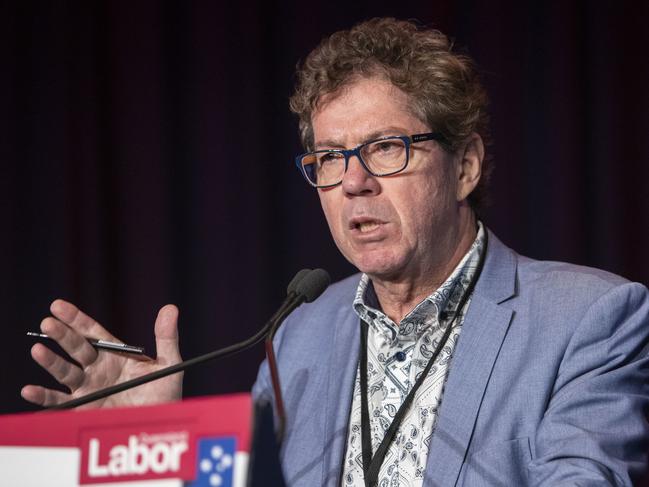Inside story: The key power players behind Palaszczuk’s exit
In the end, Annastacia Palaszczuk’s departure after almost nine years in the top job came down to a decision made by one person – and it was not her.
QLD Politics
Don't miss out on the headlines from QLD Politics. Followed categories will be added to My News.
In the end, Annastacia Palaszczuk’s departure after almost nine years in the top job came down to a decision made by one person – and it was not her.
Instead, the decision was Gary Bullock’s – the union official named last year by The Courier-Mail as the most powerful person in the state.
Mr Bullock, or “Blocker” as he is almost universally known, had decided Ms Palaszczuk was no longer the best person to lead state Labor.
When he indicated that to her in a meeting last week, the die was cast.
But it was not a decision Mr Bullock had made on a whim.
Indeed, until just weeks ago he had been a staunch supporter of Ms Palaszczuk’s – along with John Battams, another powerful union figure and long-time president of Queensland Labor.
Deputy Premier Steven Miles, ambitious Health Minister Shannon Fentiman, and Treasurer Cameron Dick had been agitating for a change since Ms Palaszczuk’s ill-considered visit to Italy’s Amalfi Coast in August with partner Dr Reza Adib – a trip she had not told senior colleagues about.
But with Mr Bullock and Mr Battams still firmly in her corner, Ms Palaszczuk was untouchable.

However, on October 26 The Courier-Mail published a poll it had commissioned from YouGov which showed not only a continuation of the downward trend in Labor’s vote – but revealed Ms Palaszczuk was no longer preferred premier for the first time, and that her performance rating was worse than Anna Bligh and Campbell Newman.
A few days later it emerged a union had commissioned an opinion poll asking pointed questions about Ms Palaszczuk’s leadership.
And sure enough, by early November Mr Bullock had made his mind up: a change had to be made, and it had to be made before Christmas to give the new premier enough time to build their profile before the election on October 26 next year.
Ms Palaszczuk was still dug in and resisting, for two reasons: unwavering self belief, and an eye on history.
She genuinely believed she could turn the polling around and win at the election.
This was not only based on her previous success at two elections she had been written off in months out – in 2015 when she beat Campbell Newman, and in 2020 when the pandemic saw her returned with an increased majority.

For one senior minister the frustration with Ms Palaszczuk’s blind confidence had reached boiling point, but they thought it would still be electoral suicide to move against her.
Her self-belief was also based on the positive reception she continued to receive when she met people at public events, and a culture in her office where staff never delivered her bad news.
Ms Palaszczuk was also determined to hold on until May 10 when she would have become Labor’s longest-serving post-war Queensland premier, taking the title from Peter Beattie.
The Palaszczuk family believes Mr Beattie did not properly respect Annastacia’s father Henry when he served as primary industries minister. It is a perceived slight not yet forgiven, let alone forgotten.
Suffice to say, Ms Palaszczuk was not planning to step down – even in recent days proudly talking about how excited she was to be attending the Paris Olympic Games next July in her capacity as the relevant Minister.
But plans were afoot.
Enter Robert Schwarten, another former Beattie government minister who remains an influential figure within the party’s swing-vote Old Guard faction that is currently allied in the state Labor Caucus with Mr Bullock’s United Workers Union.

On Friday, December 1, Mr Schwarten wrote a column for The Courier-Mail where he declared that Ms Palaszczuk must consider resigning and a new leader chosen to keep Labor relevant and give it a fighting chance at the election.
Later that same day, former Beattie and Goss government minister Bob Gibbs went further, describing Ms Palaszczuk as the walking dead and calling on MPs to move against her.
“Somebody needs to have the balls to stand up in that Caucus and move a motion of no confidence,” Mr Gibbs told The Courier-Mail.
Labor MPs were quick to dismiss both these attacks – both privately and in public – as ramblings of old irrelevant has-beens.
On Saturday The Courier-Mail’s front page told the true story with the headline: ‘Premier at War’.
Attorney-General Yvette D’Ath – Ms Palaszczuk’s close friend – faced the cameras to insist there was no war, that these “old retired blokes” knew nothing of modern politics.
“The blokes who are popping their heads up have been out of politics for a long time,” she said.
A day later Sport Minister Stirling Hinchliffe was equally dismissive, declaring even responding to such comments was “just a waste of time”.

But they were missing the point.
On Monday, December 4, Ms Palaszczuk was joined by Education Minister Grace Grace – another close friend – when with her usual chutzpah she said Mr Gibbs had only been relevant when “I was in primary school”.
The Premier did, however, acknowledge a leadership coup might be under way.
And she was right.
It turns out that Schwarten and Gibbs had actually been acting as the Trojan Horse for an alliance of current and former Labor figures who were actively plotting a coup.
Who was in that group is not fully known outside of the group itself.
But after Mr Schwarten’s incendiary column was published, multiple sources reached out to The Courier-Mail to point out he had been at the Ship Inn at South Bank at the Queensland Hotels Association Christmas party the Wednesday evening before – drinking with Mr Bullock and his now-preferred candidate as leader Steven Miles, and the current chair of the Old Guard faction former minister Kate Jones.
Also at the function, but noticeably keeping to a separate group, was Mr Battams – a member of the Old Guard.
Meanwhile Ms Fentiman was also actively in the early stages of lobbying MPs to back her as leader, a fact Mr Bullock is understood to have made Ms Palaszczuk aware of when they met last week – with Mr Battams also in attendance. To surprise Ms Fentiman and ensure Mr Miles would succeed her, Ms Palaszczuk was told if she was to resign it would be best if it happened sooner rather than later.
But even the best laid plans couldn’t have envisaged the severity of the blowback on Ms Palaszczuk following Mr Hinchliffe’s botched announcement to convert the RNA Showgrounds’ main arena into a $150 million boutique stadium.

The government blindsided Lord Mayor Adrian Schrinner and both the Lions and Queensland Cricket when it demanded the stakeholders contribute tens of millions of dollars for the temporary Gabba replacement.
The RNA plan, described by Mr Schrinner as “extortion”, even dismayed one of Australian sport’s most adored figures, cricketer Usman Khawaja – who warned the extraordinary demand would send Queensland Cricket broke.
The Sunday Mail front page last weekend revealed Schrinner was so furious about the way things had been handled that he was sensationally resigning from the Brisbane 2032 Games delivery forum, and had withdrawn his support for the Gabba rebuild.
That saga may have been the final straw for the Premier’s waning grasp on the leadership.
Labor MPs were also exasperated by another move that risked further alienating regional voters fed up with the enormous expenses splashed to host the Games in the southeast.
Perhaps this political mess was enough to also convince Mr Battams that time was up.
Perhaps his colleagues had convinced him of that at the Old Guard Christmas function he attended the following Sunday, December 3.
Whatever it was, by last week Mr Battams, too, knew he had to level with Ms Palaszczuk – a leader he had been both very close to, and who he had backed to the hilt for over a decade.
With Battams joining Blocker, it was all over.
After almost 12 years as the leader of the Queensland Labor Party – almost nine of them as Premier – Ms Palaszczuk’s time at the top was finished.



